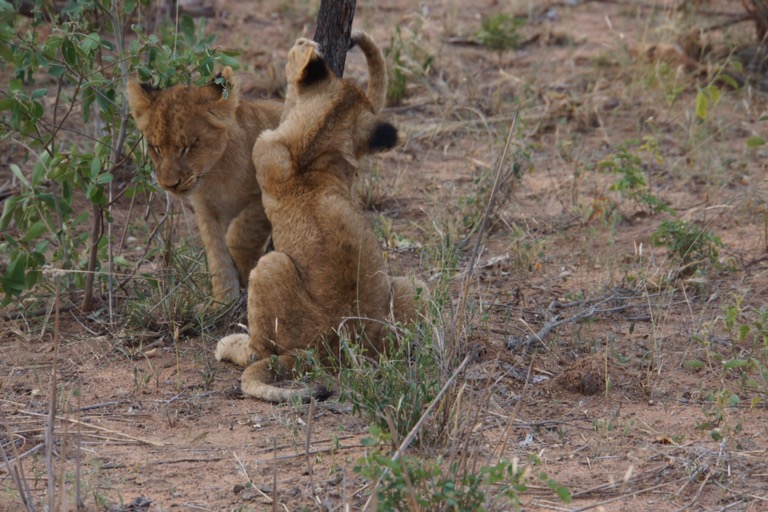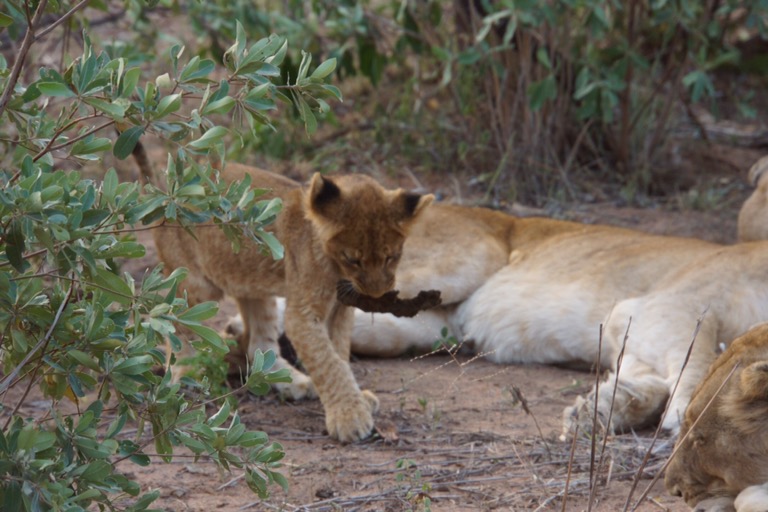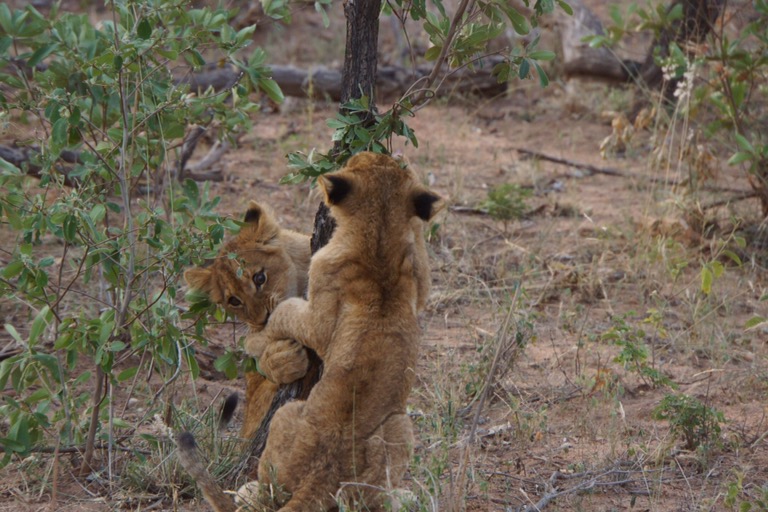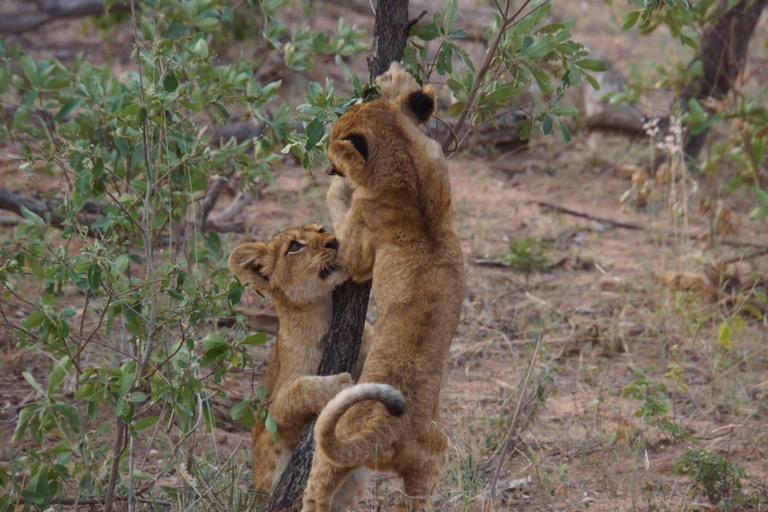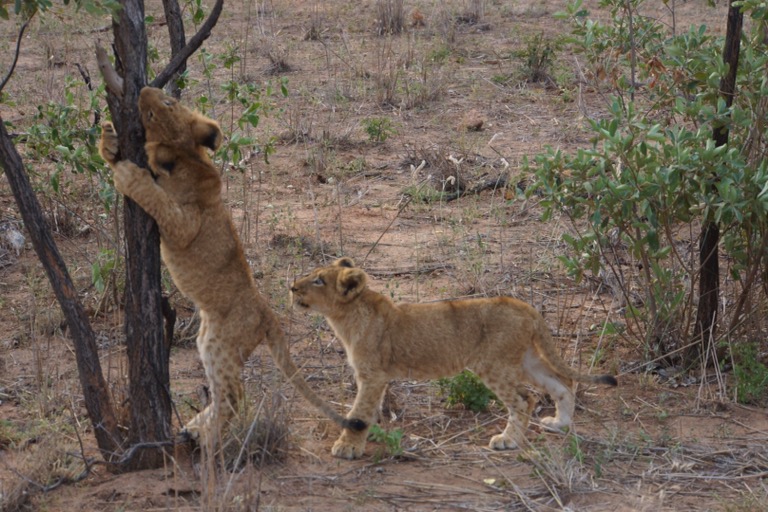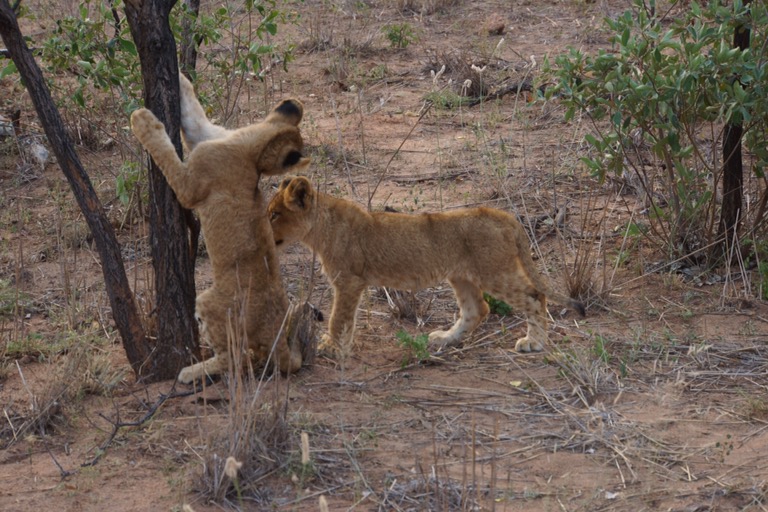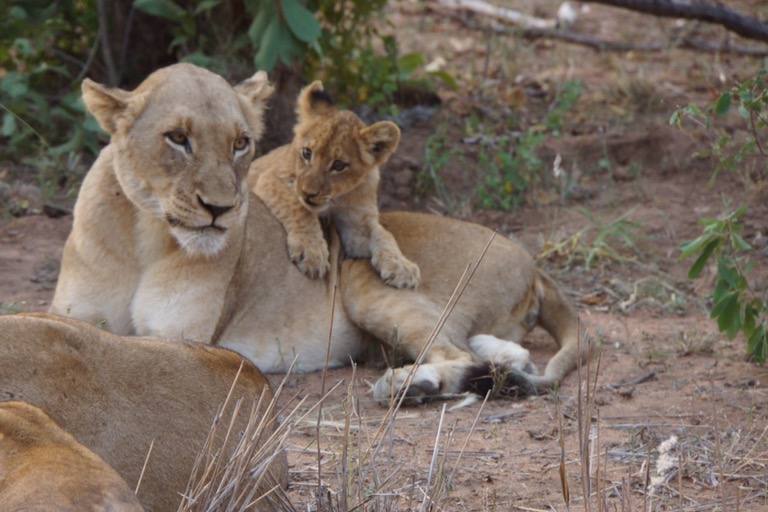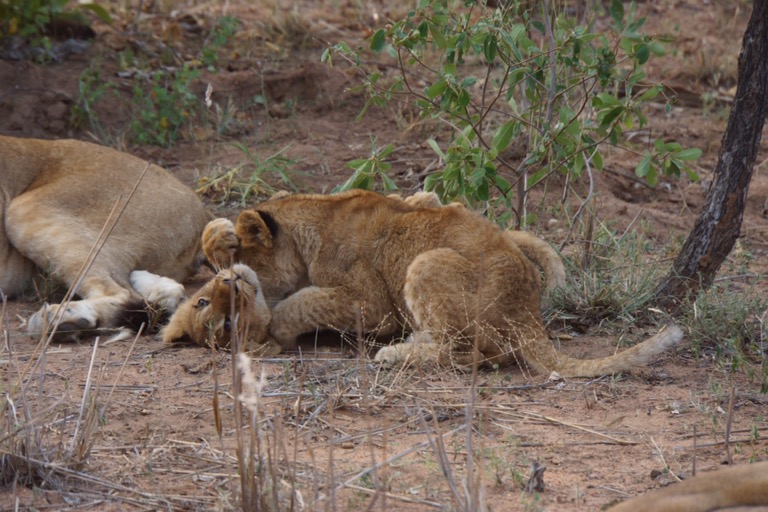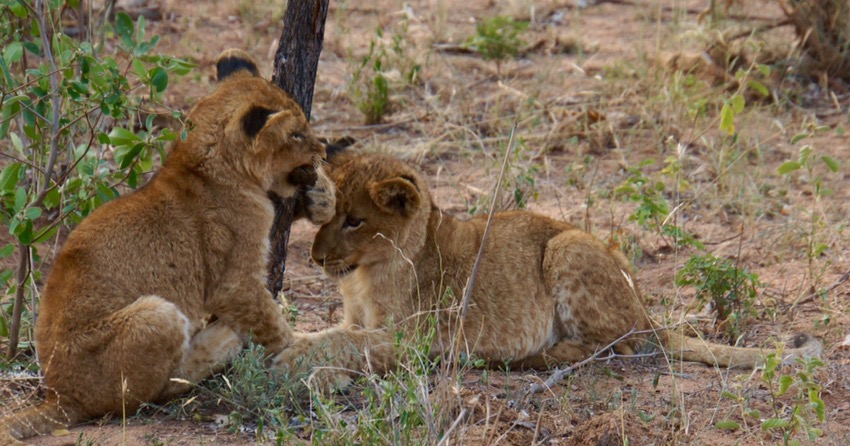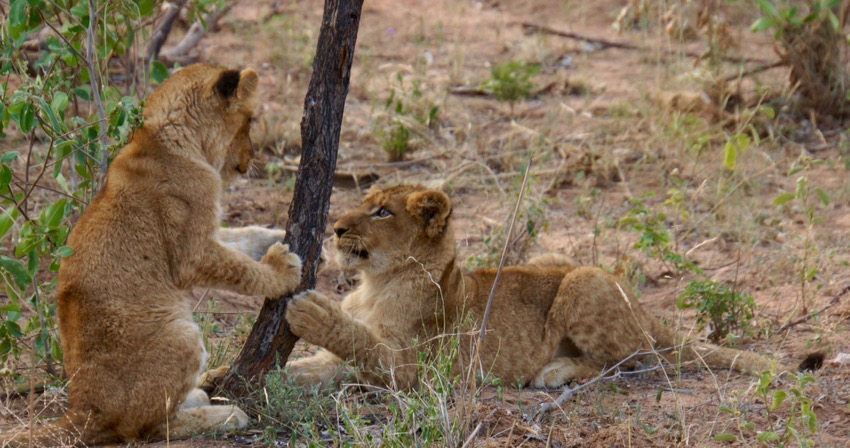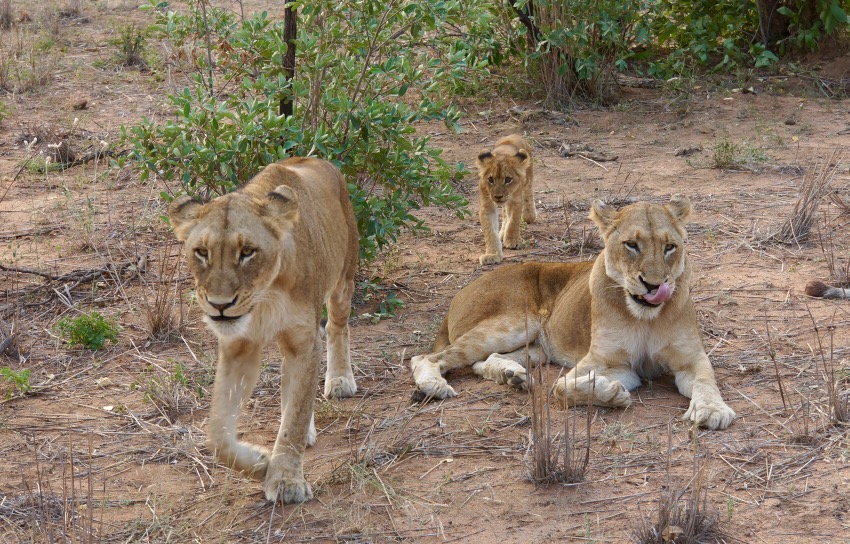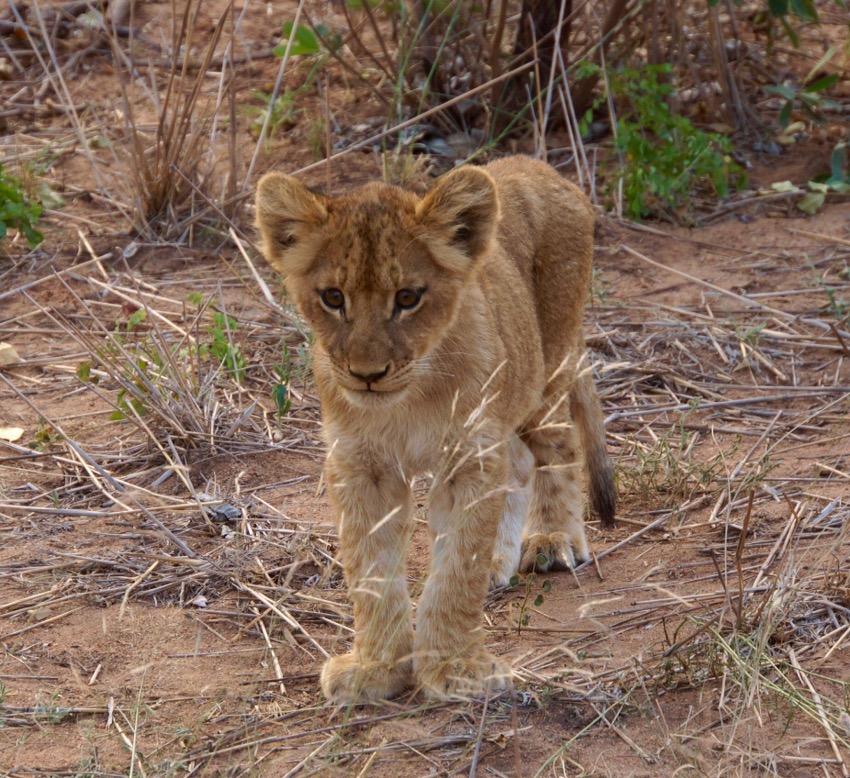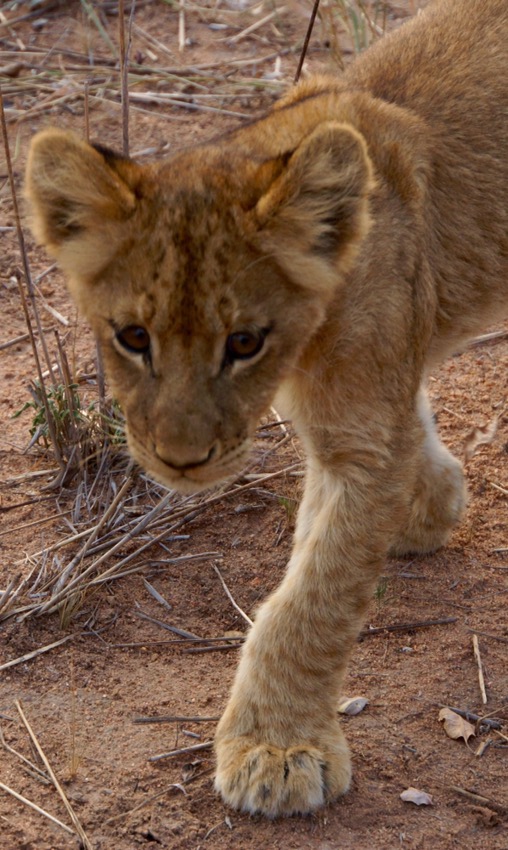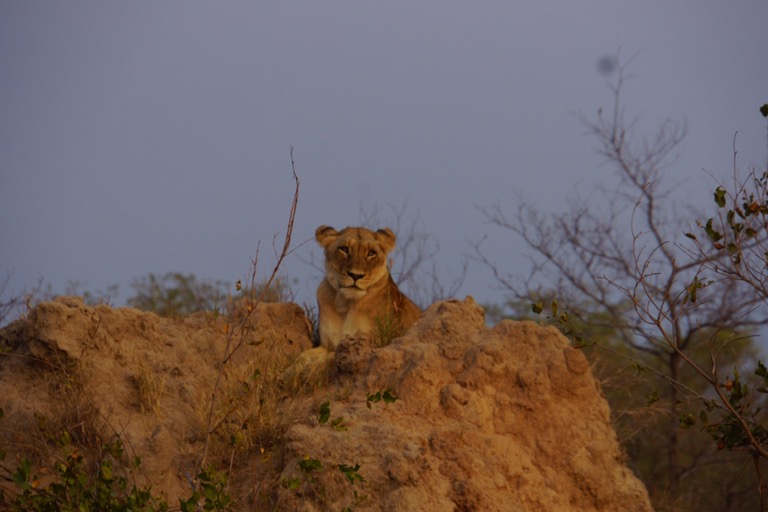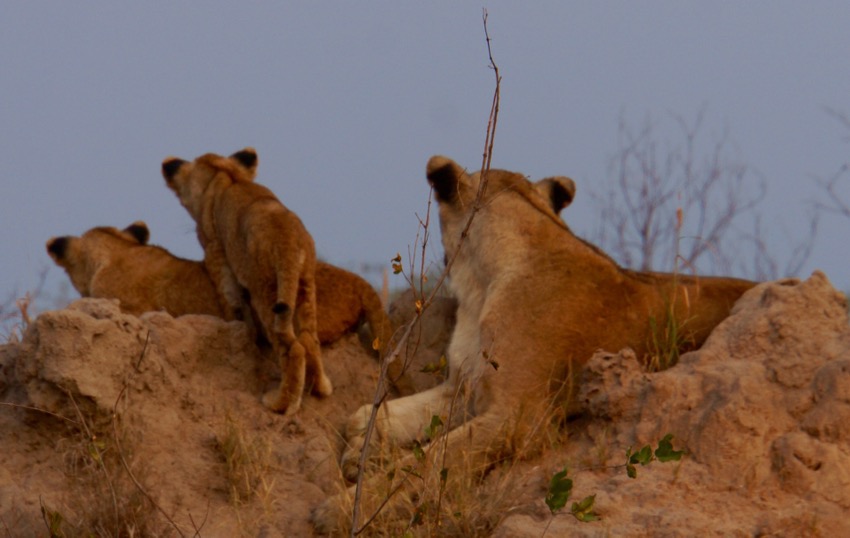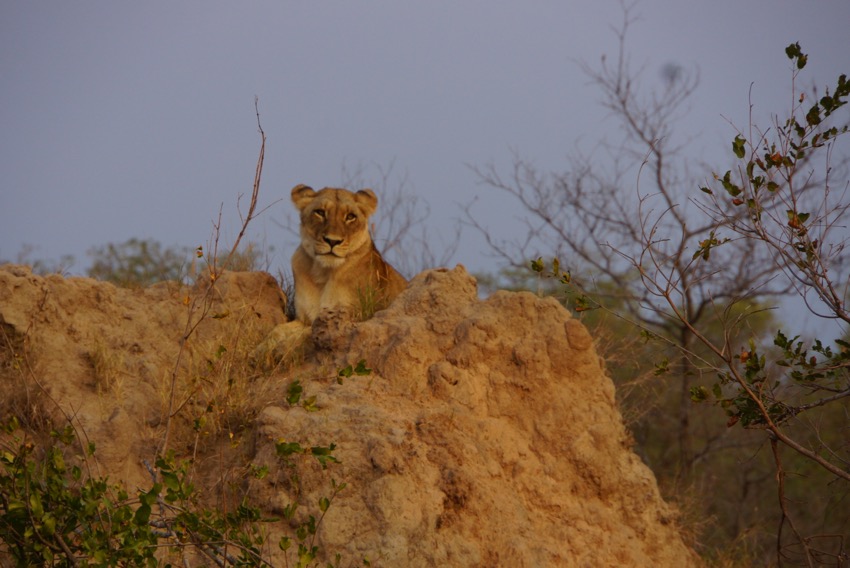May 12
“Cape Town has millions of people living in townships and today we take a tour to visit two of them, learn about their harsh past, witness the challenges they face every day, and learn about the positive hopes for the future.” That was the sentence from the itinerary prepared by our travel agent. In actuality, the township tour is sort of “township light,” emphasizing a couple centers of progress–fair enough–and virtually ignoring the realities of life. In fact, if I hadn’t insisted in a couple slow cruises through the shacks, innocuously described as “informal housing,” we almost would have missed them all together. When I asked about walking around, I was told it was “too dangerous.” We’d gotten much more accurate slices from other township or favela tours.
We were picked up at 9:00 a.m. by Godfrey, for a visit to Langa, the oldest formal black township in Cape Town. We see a crèche (nursery), which offers fun and a safe haven for the local children, and have the opportunity to join a drumming session with U Thando Arts at Guga’s Thebe. We also had the “opportunity” to buy some crafts, which we declined, making a small donation instead.
After Langa, we move on to Khayelitsha, one of the largest and fastest growing townships in Cape Town, for a visit at the art and crafts center and women’s cooperative, eKhaya eKasi. The cooperative supports a very worthwhile babies healt center set up by a Swedish doctor. Again we declined the opportunity to buy some things and made a contribution. There’s nothing wrong about offering these goods and a way to help the communities, and we did not feel pressure. Still in the absence of tastes of the harsher realities, it makes the trip seem more like a shopping trip (that’s definitely an overstatement). We stopped at a small hut–a pub–where I sipped locally-produced beer out of a big pail that was passed around to the other men.
In the afternoon, we drove the Gugulethu Seven Memorial, built to commemorate the death of seven young black activists from this township, and the Amy Biehl Memorial. Amy Biehl was an American Fulbright Scholarship exchange student, who was tragically killed in by black activists, who were convicted, and then later granted amnesty through the Truth and Reconciliation Commission.
Surprisingly, the most interesting aspect of our township tour was Godfrey, our 35-year old guide, who grew up and lives in Langa. He is a candidate for district councilor for the EFF (Economic Freedom Fighters), an opposition political party, formed several years ago that has grown enormously. We talked in detail about his goals, which all appear to be worthy community development, and his organizing efforts. There was a lot of energy around this discussion, and I told Godfrey that I was going to take over as his campaign manager. He has promised to keep us posted.
Here are some photos from the township.
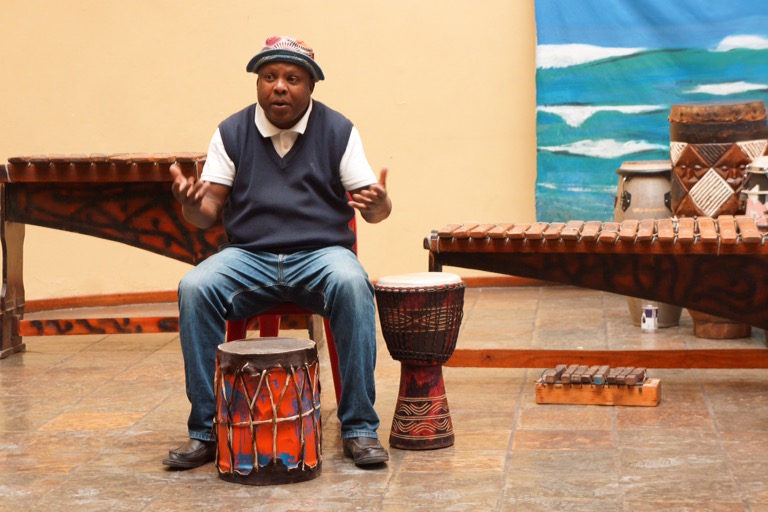  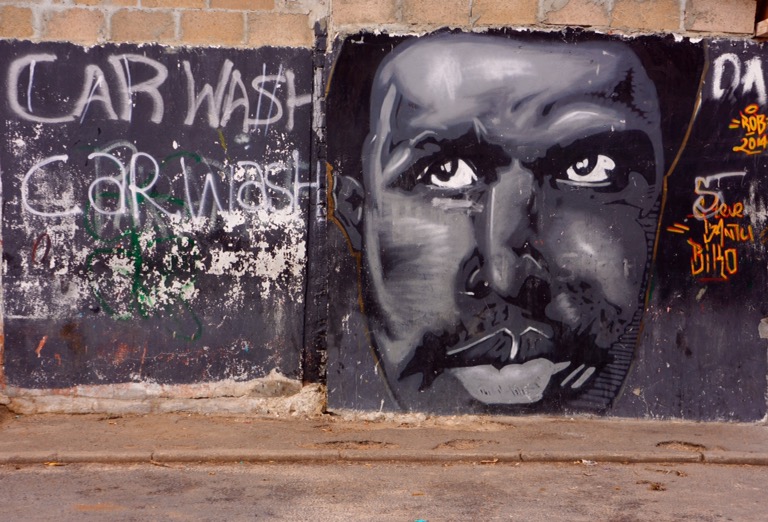 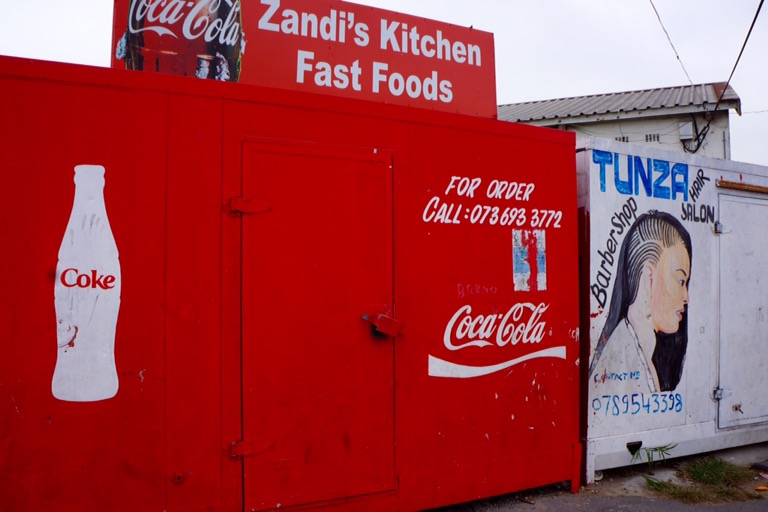  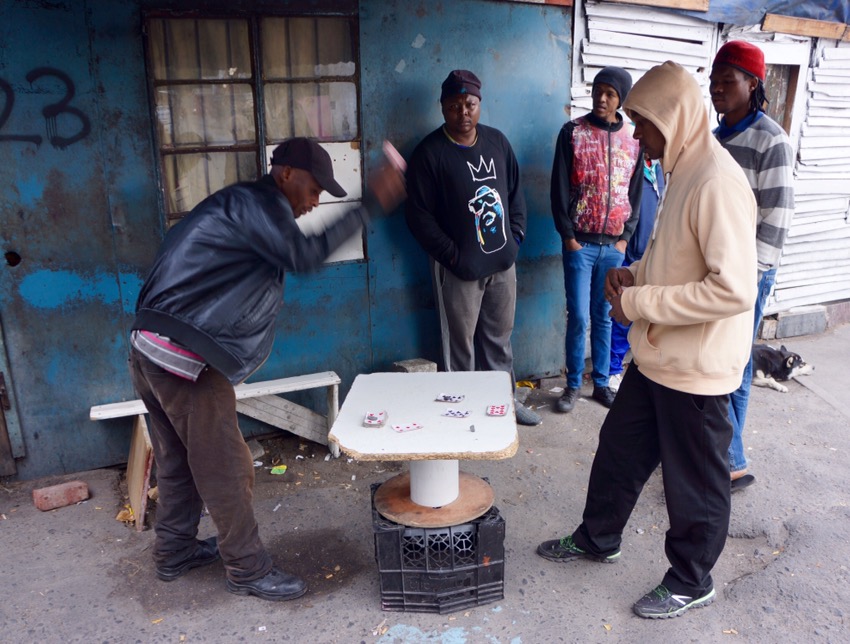 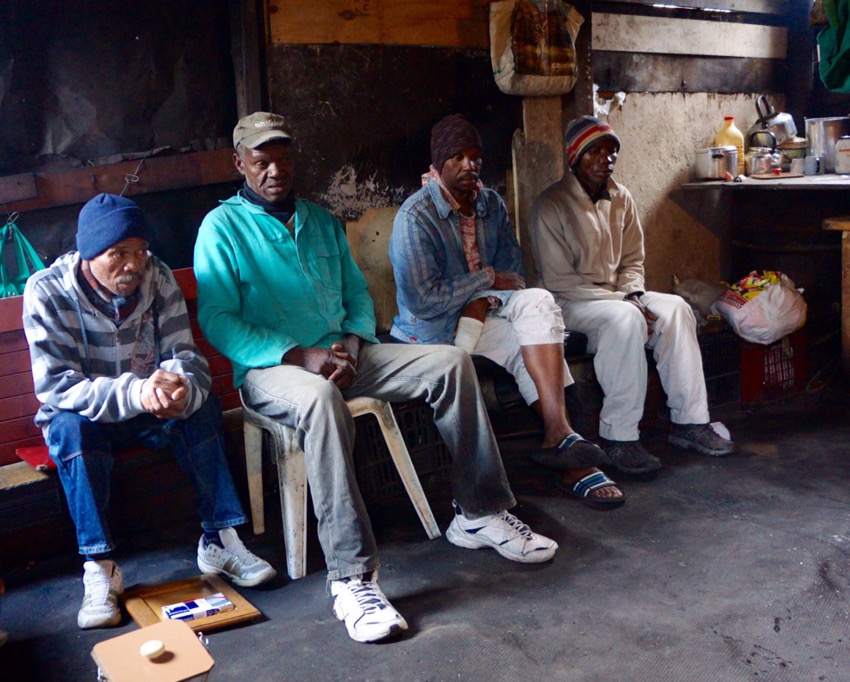   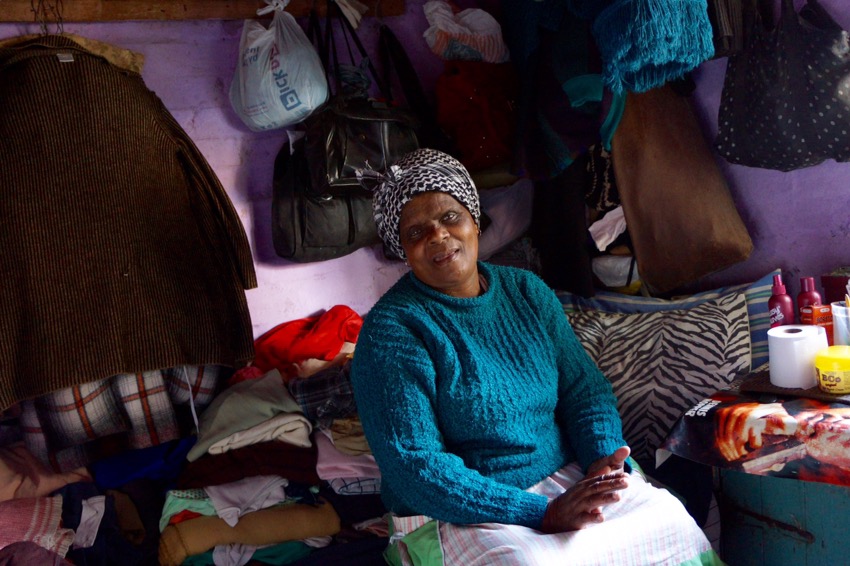 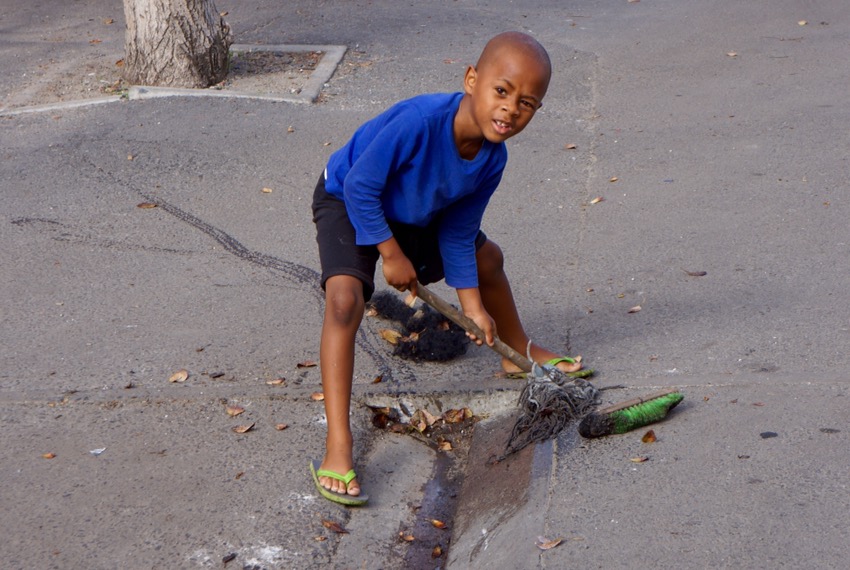 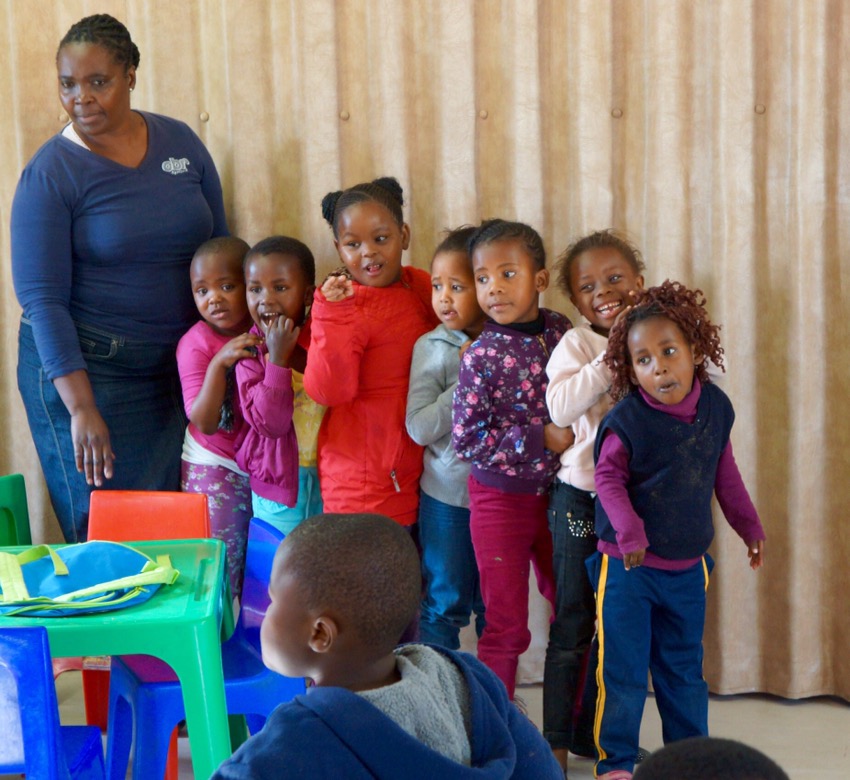 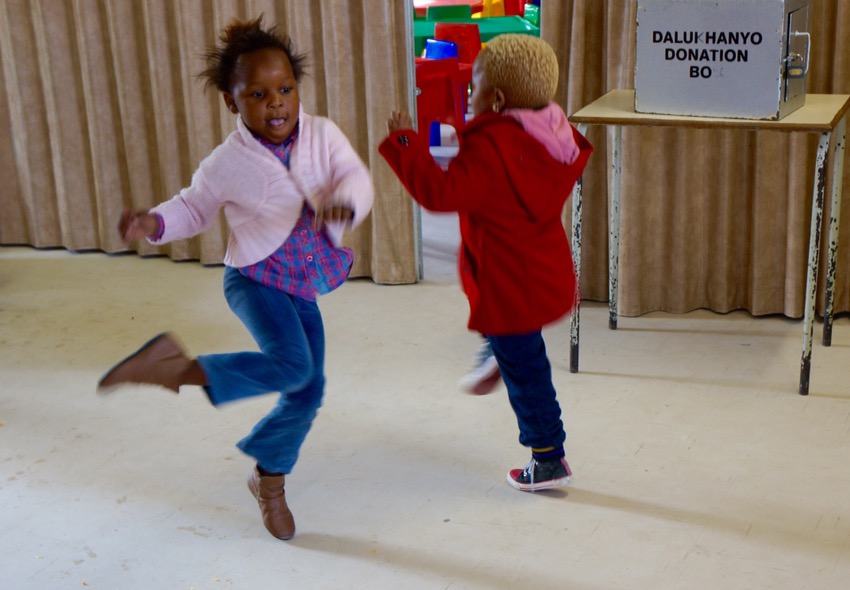 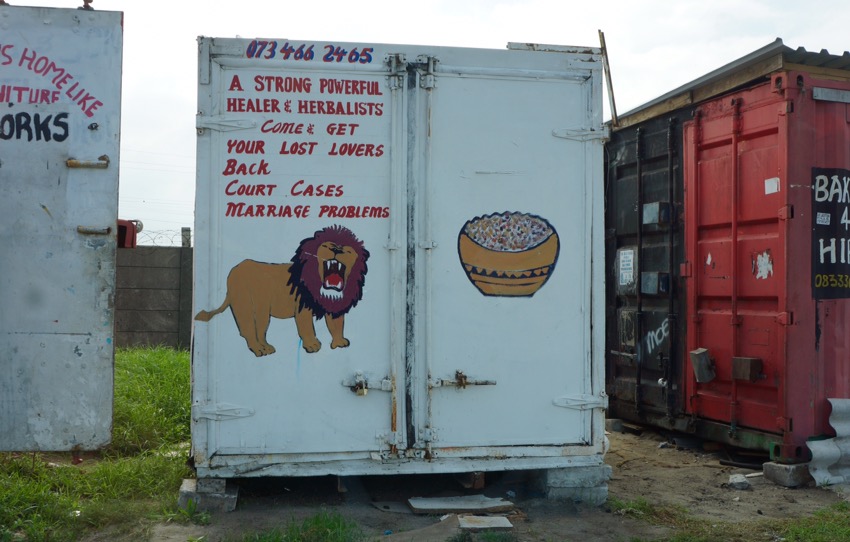 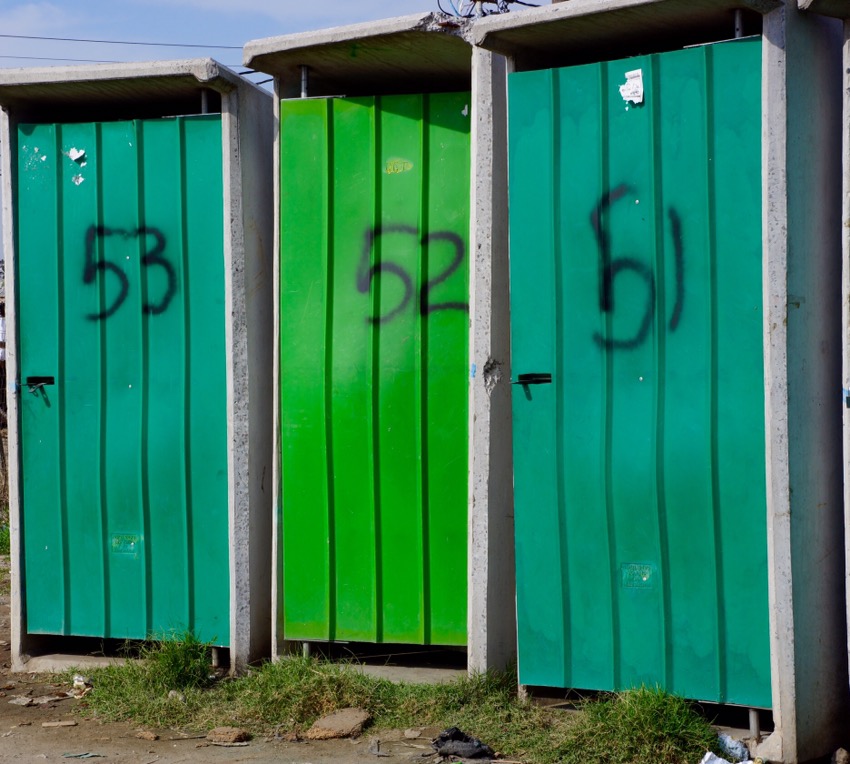 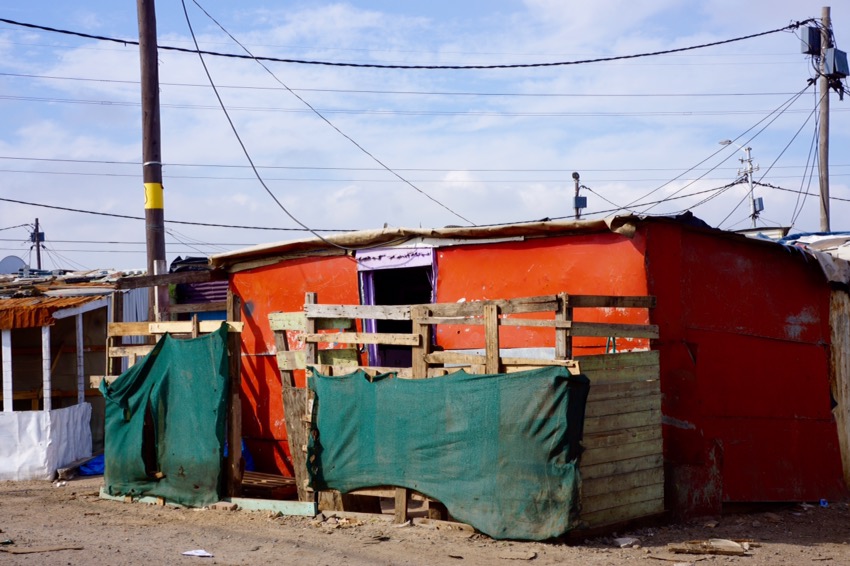  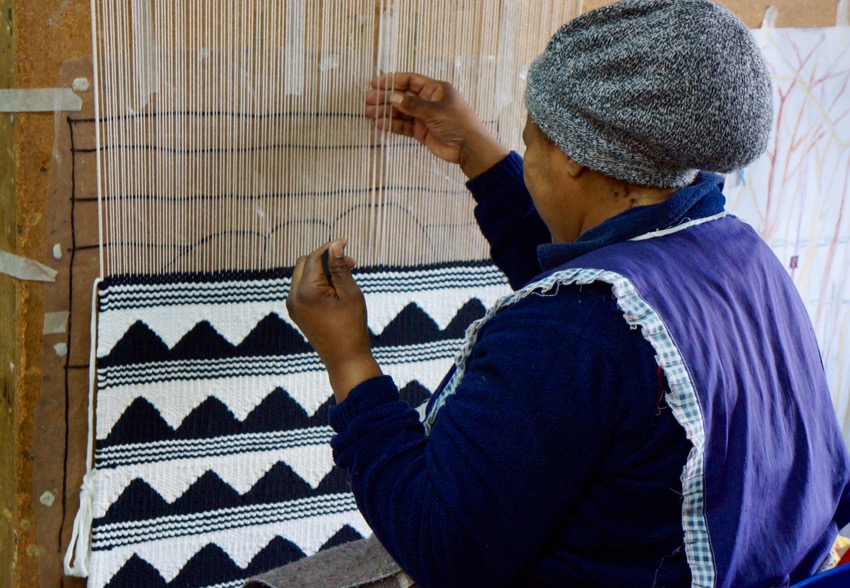 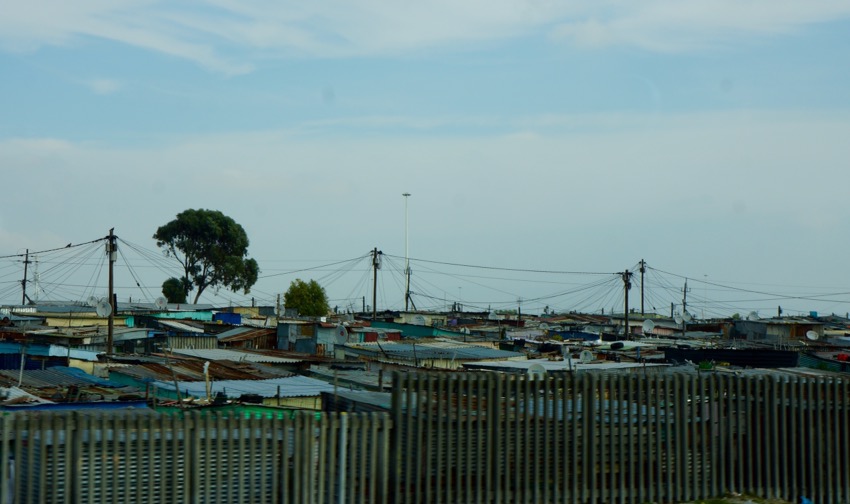
Carol and I had a real surprise treat for Zoe (and us) this evening. Thirteen years ago, when Carol and I travelled with friends of ours to South Africa, we had the pleasure of spending an evening with Justice Albie Sachs and his wife Vanessa September–drinks at their house, a speech Albie delivered and then dinner with them. Knowing we’d be in Cape Town, I managed to track Albie down, and we made arrangements to get together this evening.
Carol, Zoe and I spent an hour talking with Albie at his beautiful house that overlooks the ocean. Our discussions ranged to the many international matters he’s involved in in Colombia and other parts of the world. I was particularly interested opinion Colombia, having been there recently. He was not surprised to hear about the great skepticism I heard about the peace talks that are taking place in Cuba, which Albie has been a part of. He travels widely, lecturing and consulting, and is off tomorrow to give an address to a prestigious international organization in Toronto.
We went from his house to an art gallery in downtown Cape Coast that featured the work of the wife of the Spanish Ambassador, which Albie had been asked to open with some remarks. The work was interesting, incorporating newspaper accounts from around the world of South Africa’s struggle for freedom. Albie’s remarks were quite excellent, drawing on how Spain and Spanish poetry and music had influenced his life. After dinner, we were invited to join Albie, Vanessa, the Spanish ambassador and his wife and several other embassy and art gallery people for a delicious dinner at an Indian restaurant near the gallery. Vanessa was particularly delightful, sitting next to Zoe and engaging her fully in conversation. After dinner Vanessa and Albie drove us to our hotel. Below is a photo of Albie with the artist and a very poor photo of us with Albie and Vanessa–and the some biographical material on Albie.
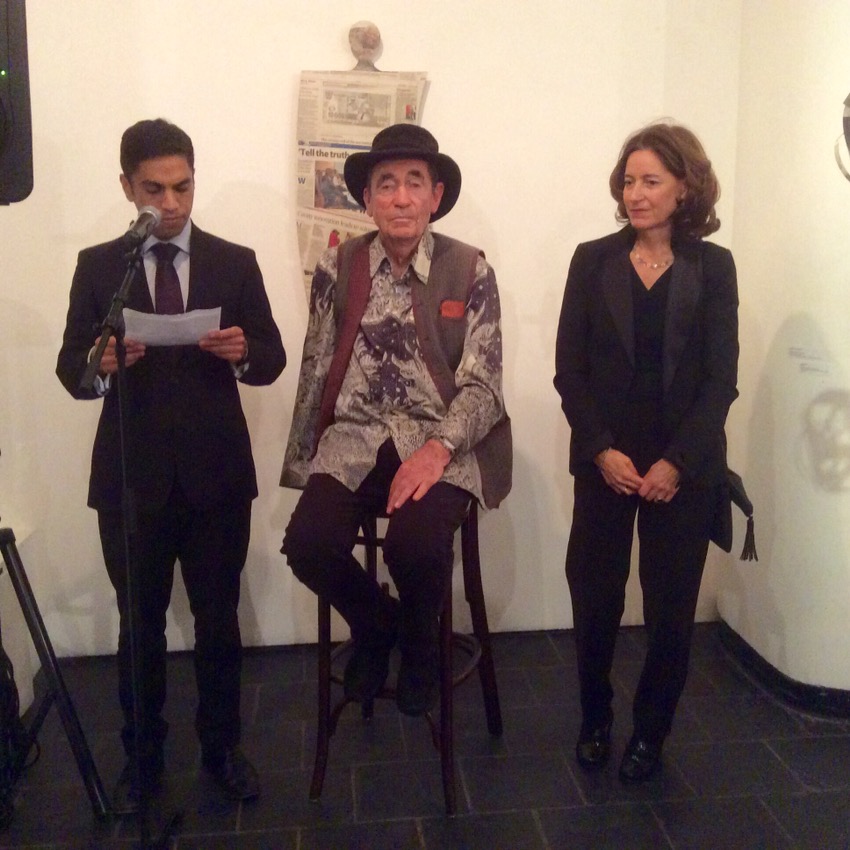
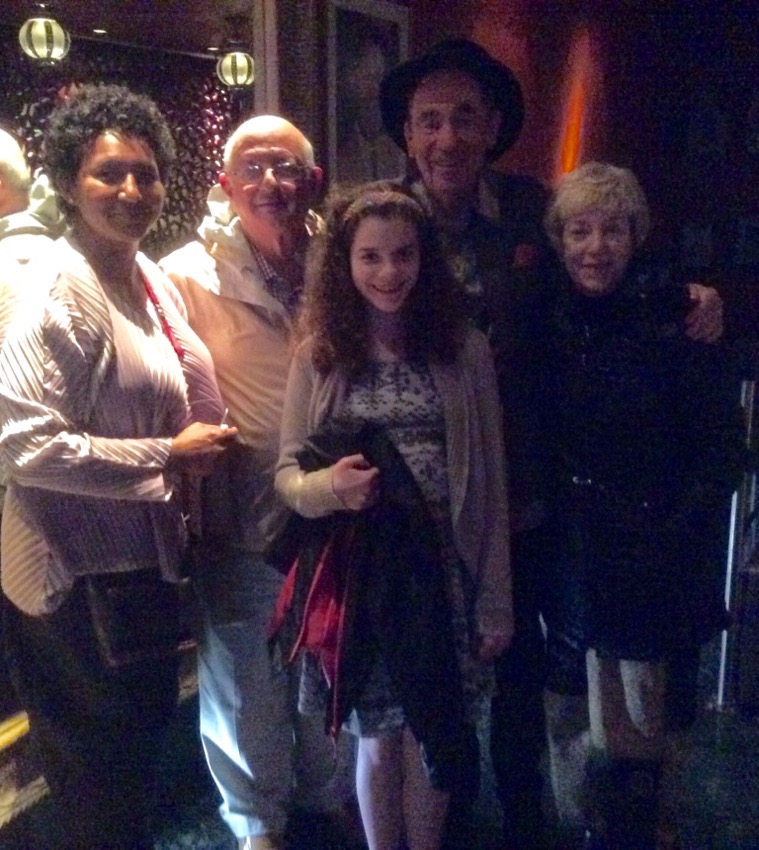
Here, briefly is some autobiographical information about Albie. He was born in Johannesburg in 1935. His father, Emil Solomon (Solly) Sachs, had arrived in South Africa from Lithuania at the age of six, on the eve of the First World War, and his mother, Ray, had arrived as an infant. Both of his parents were involved in the Communist Party and trade unionism.
His career in human rights activism started in 1952 , when as a 17 year old second year law student at the University of Cape Town, he took part in the Defiance of Unjust Laws Campaign. Three years later, he attended the Congress of the People at Kliptown where the Freedom Charter was adopted. He began his practice as an advocate at the Cape Bar when he was 21, and most of his work involved defending people charged under apartheid’s racist statutes and repressive security laws. Many of the people he defended were facing the death sentence. As a result of his work, he was raided by the security police, subjected to banning orders restricting his movement and was placed in solitary confinement for 168 days without trial. He eventually went into exile in 1966.
He spent eleven years studying and teaching law in England, and a further eleven years in Mozambique working as a law professor and legal researcher. On 7 April 1988, a bomb that was placed in his car in Maputo (Mozambique) by South African security agents, blew up. He lost an arm and the sight of one eye.
In exile during the 1980’s, Sachs worked closely with Oliver Tambo, the leader of the African National Congress (ANC), and helped draft the organization’s Code of Conduct and statutes. After recovering from the effects of the bomb blast, he devoted himself full-time to preparations for a new democratic Constitution for South Africa. Finally, in 1990, he returned home. As a member of the Constitutional Committee and the National Executive Committee (NEC) of the ANC, he played an active role in the negotiations which led to South Africa becoming a constitutional democracy. After the first democratic election in 1994, he was appointed by then President Nelson Mandela to serve on the newly established Constitutional Court.
As a constitutional court judge, Justice Sachs was the chief architect of the post-apartheid constitution of 1996. As one of 11 green-robed judges, he participated in landmark rulings. These rulings included declaring capital punishment a violation of the right to life, to making it unconstitutional to prevent gay and lesbian people from marrying. The court also backed Aids campaigners in 2002, by insisting that the government had a duty to provide HIV-positive pregnant women with drugs to reduce the risk of transmission to their newborn babies.
In addition to his legal work, he has travelled to many countries sharing his experiences, in order to help heal divided societies. He has also been engaged in the sphere of art and architecture, and was involved with the development of the Constitutional Court building and its art collection (located on the site of the Old Fort Prison in Johannesburg). Sachs has also authored several books, including The Jail Diary of Albie Sachs (1966), which was published in Britain when he was a banned writer in South Africa. This book was later adapted by David Edgar as an RSC play in 1979, which is now a classic of prison memoirs. Stephanie on Trial followed his second detention, and The Soft Vengeance of a Freedom Fighter (1990) traced his triumphant convalescence after the bombing. He also wrote a book with Indres Naidoo, entitled Island in Chains. In 1991 he received the Alan Paton Award for Soft Vengeance of a Freedom Fighter.
Albie holds 14 honorary degrees across four continents In 2009 he received the Reconciliation Award as well as the Academy of Achievement Golden Plate Award. On 21 June 2014 he was awarded Taiwan’s inaugural Tang Prize in the Rule of Law for his contributions to human rights and justice globally In 2015 Albie was named a Ford Foundation Art of Change Fellow. He had helped select the art collection at Constitution Hill, the seat of the Constitutional Court.
Not exactly your ordinary tourist day in South Africa.
May 11
After another fine breakfast, we eschewed the traditional stop at the Apple Store in favor of ascending Table Mountain by cable car on a beautiful, sunny day. The rest of Capetown had the same idea, so there was a very long line. Waiting, I wondered whether this was really worthwhile. It was. The views were spectacular, much more so than either Carol or I remembered of our visit 13 years ago, when we might not have had such glorious weather.
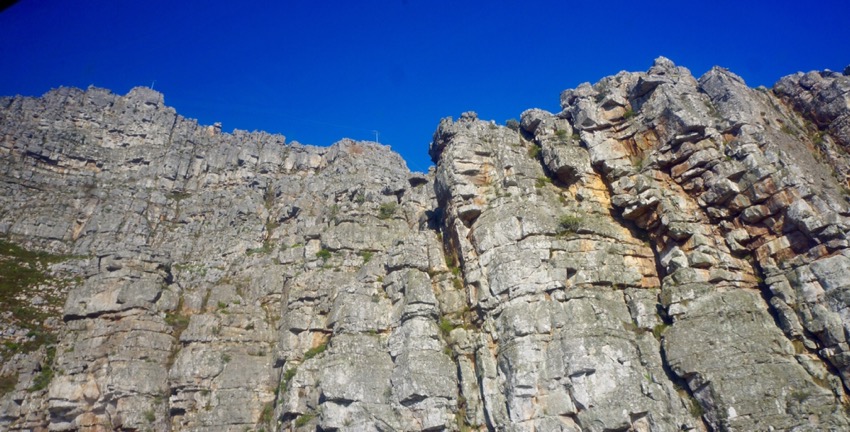 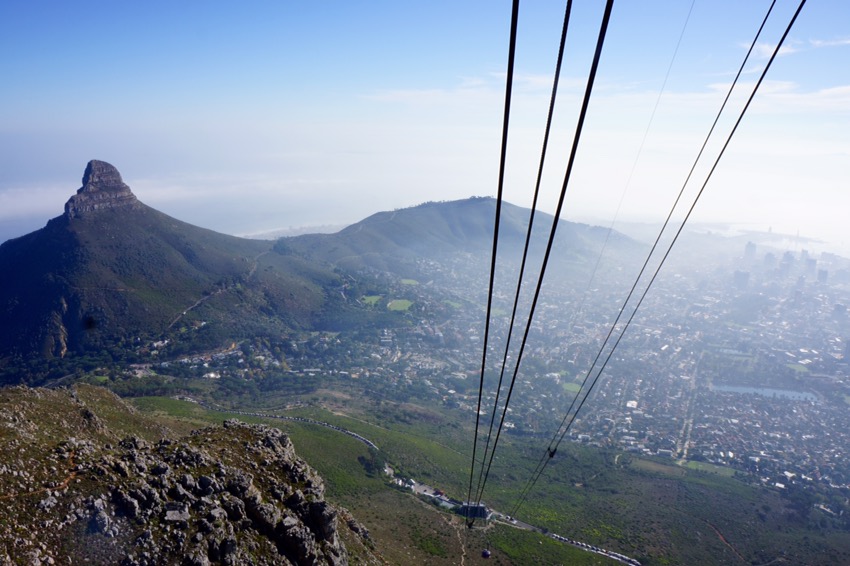 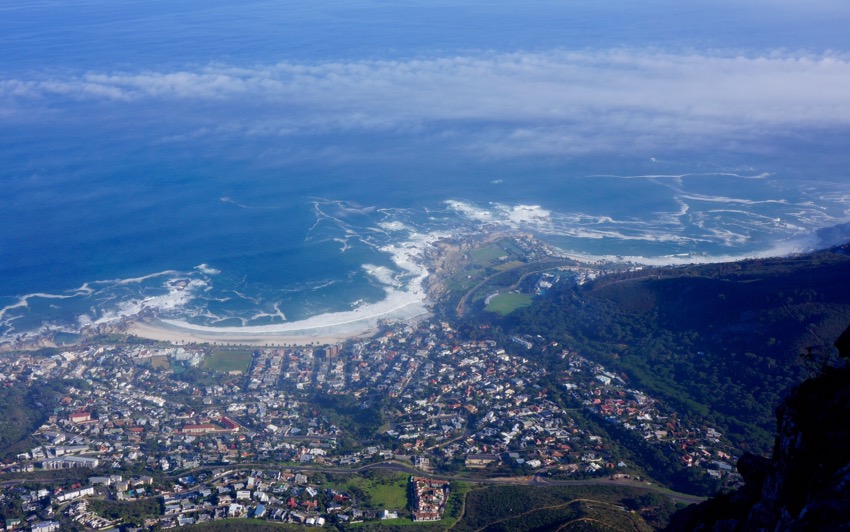 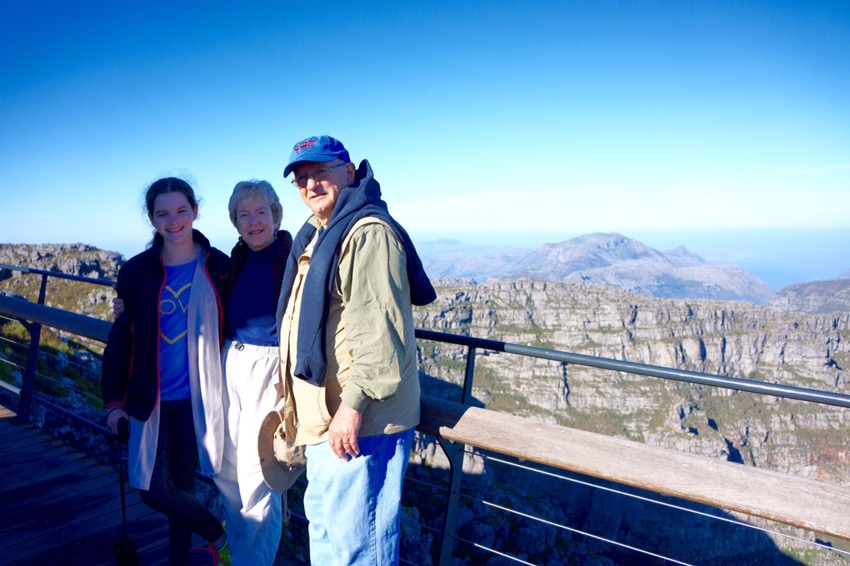 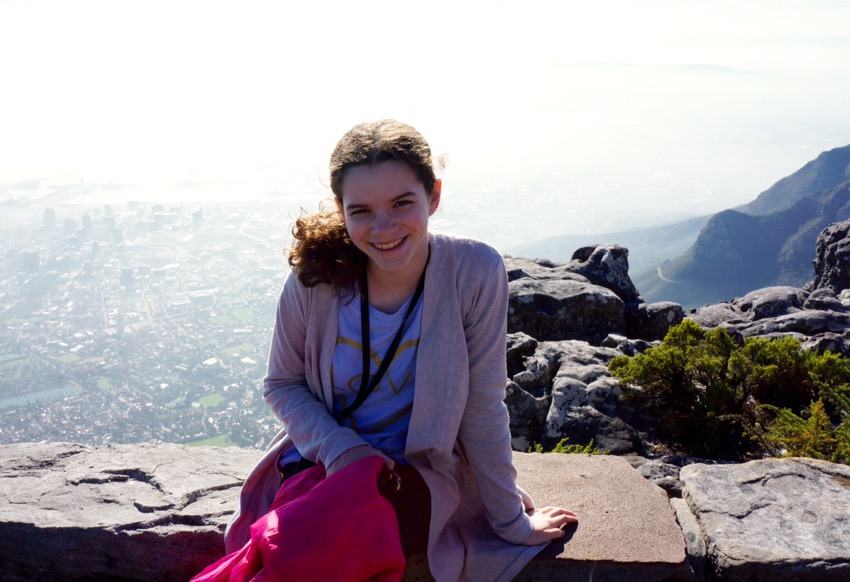
We continued riding with Rudi along the scenic peninsula road, and stopped at a former fishing village, where Carol did serious shopping damage, and Zoe was able to observe her bargaining technique.
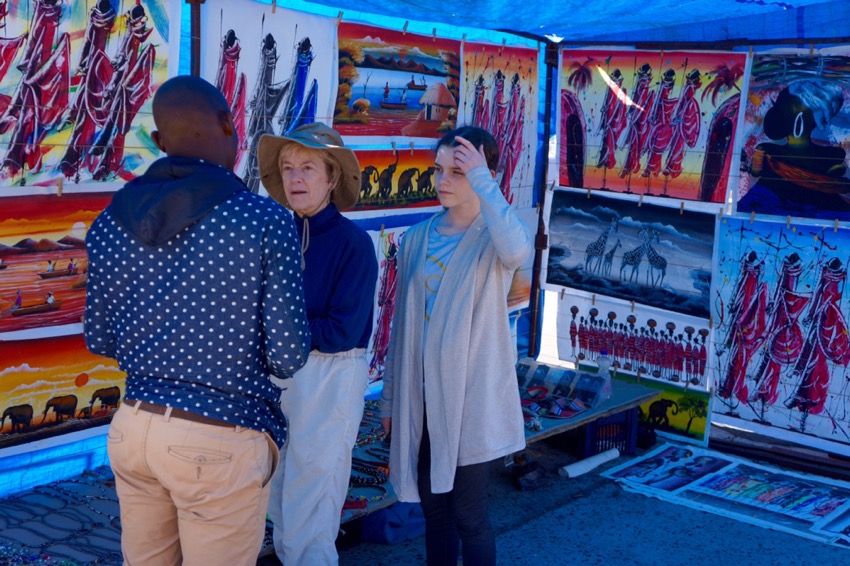
We continued to Cape Point and the Cape Good Hope, the Southwesternmost point of Africa where the Indian and Atlantic Oceans meet. There we had a quick lunch, then took the funicular up for a view of the meeting of the oceans.
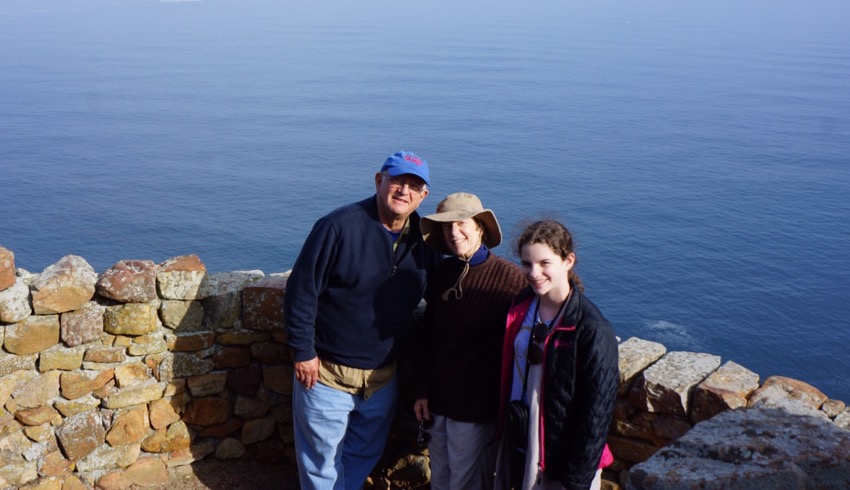 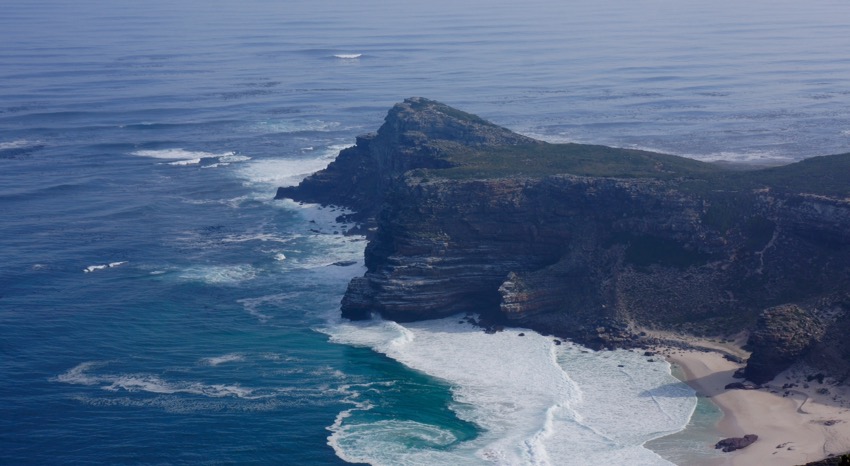
Afterwards we visited the large and amusing colony of penguins at Boulder Beach.
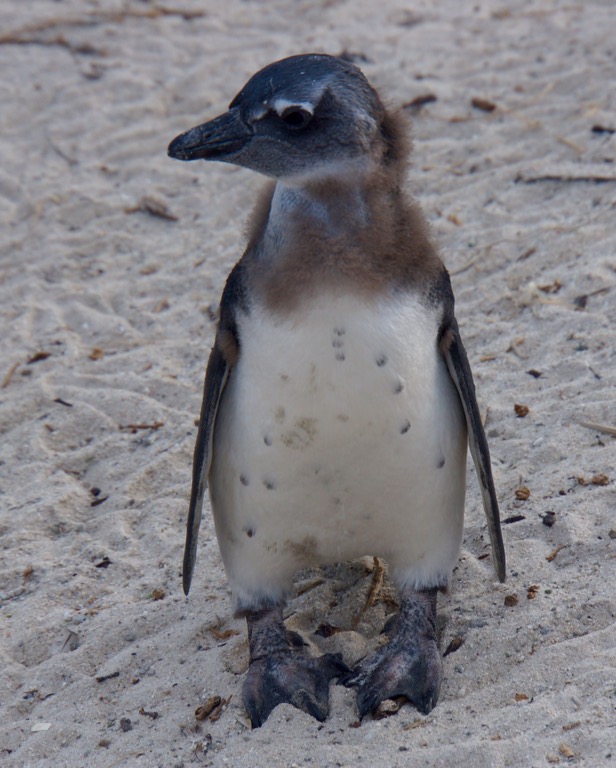 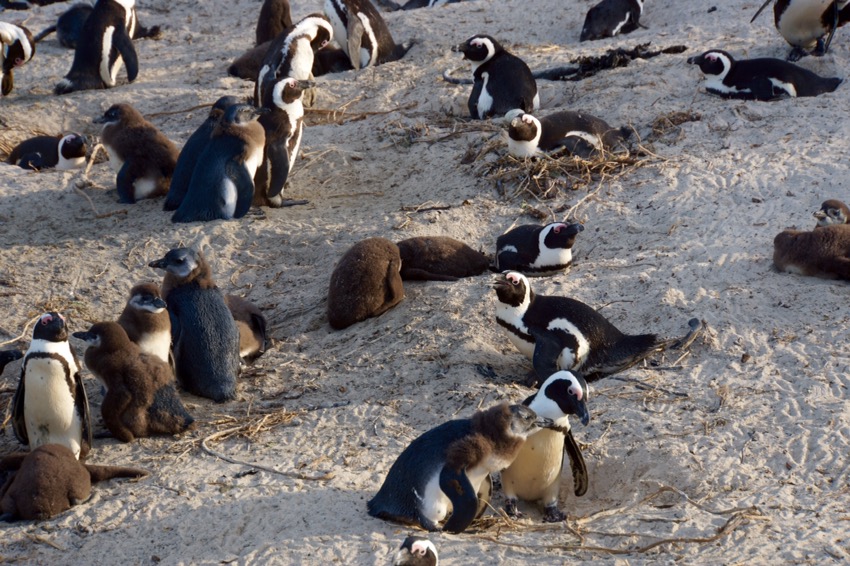 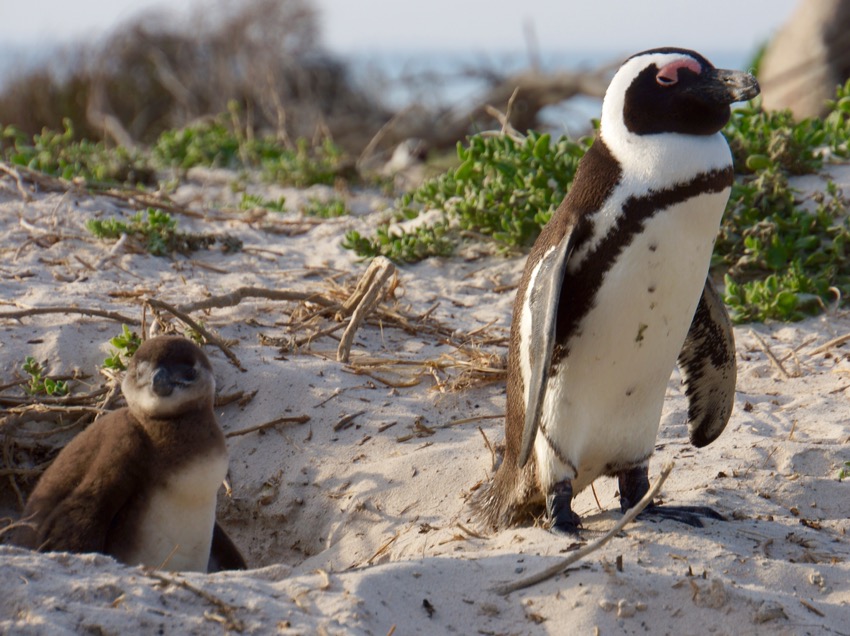 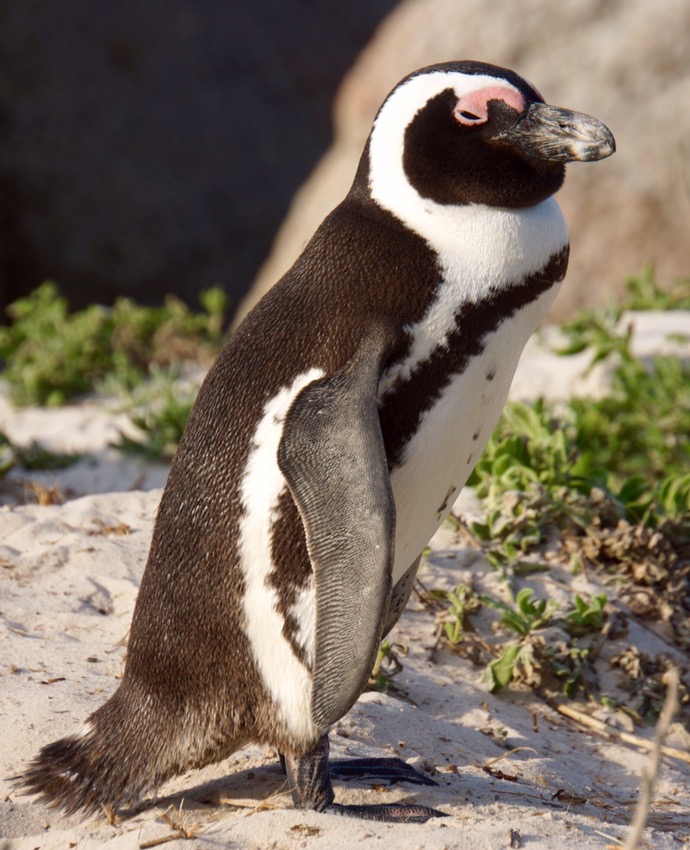
Headed back to our hotel and said goodbye to Rudi, who was a fabulous guide–fun, knowledgable, a great conversationalist and attentive to our comfort and needs. We’ll miss him the next few days. We had just enough time to shower and grab a cab to the waterfront, where we met our safari friends at Harbourside House for an excellent, but very noisy dinner.
A busy and quite lovely day. Zoe continues to be a great companion, both youthful and an old soul. I think we both enjoy our verbal sparring. Taxied back to the hotel to blog and sleep.
May 10
Dinner last night was at a local Italian restaurant, called Cafe Paradiso. The meal was good, but the walk over felt a little dicey, so we taxied back. Retired early, and slept rather well. Think we should be over the jet lag by now.
After a sumptuous buffet breakfast at the hotel, we’d planned to take a cable car up to Table Mountain, but the weather did not permit that. So, instead, Rudi drove us around Cape Town, pointing out important buildings and neighborhoods. We drove through a Malay area with colorful houses that were government owned and let to people with little income.
 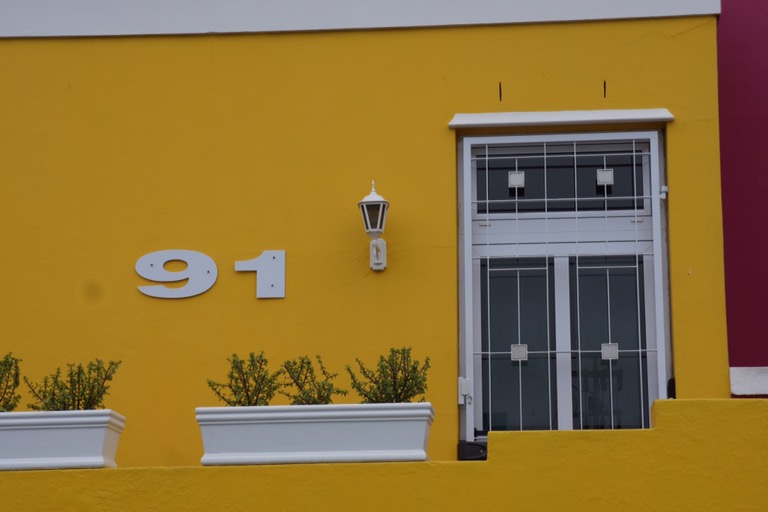 
We stopped above the area near the airport that was called District Six, inhabited by some 60,000 coloured and blacks who in 1966 were driven from homes and businesses they’d had, sometimes for generations, when the area was declared a white area by the government.
From there we made an important stop at the Apple Store to get the correct plug that would allow me to download photos to my iPad and blog.
We walked by the old fort that had been the first home of important Dutch people and proceeded up to the District Six Museum. Our stop with Rudi to see the physical area encompassed greatly enhanced our appreciation of the museum.
This is one of our favorite museums in the world. Carol and I had been moved by seeing it 13 years ago and were equally moved this time. Housed in an old church, it tells the story of how 60,000 people were displaced. Using old photos, maps, newspaper articles, poetry, artifacts and excerpts from interviews with people who had lived there, it conveys starkly and sensitively the horror and inhumanity of what occurred, emblazoning it in memory with the hope that doing so would prevent a recurrence. 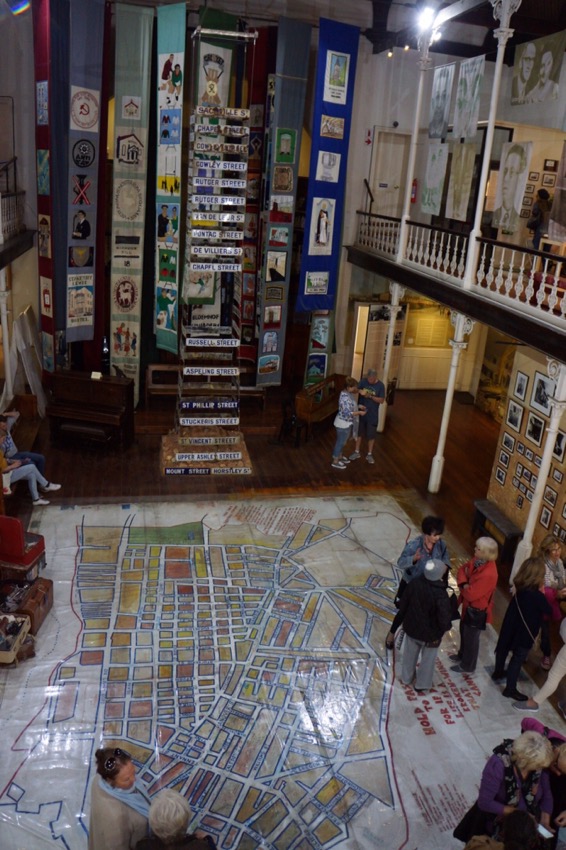
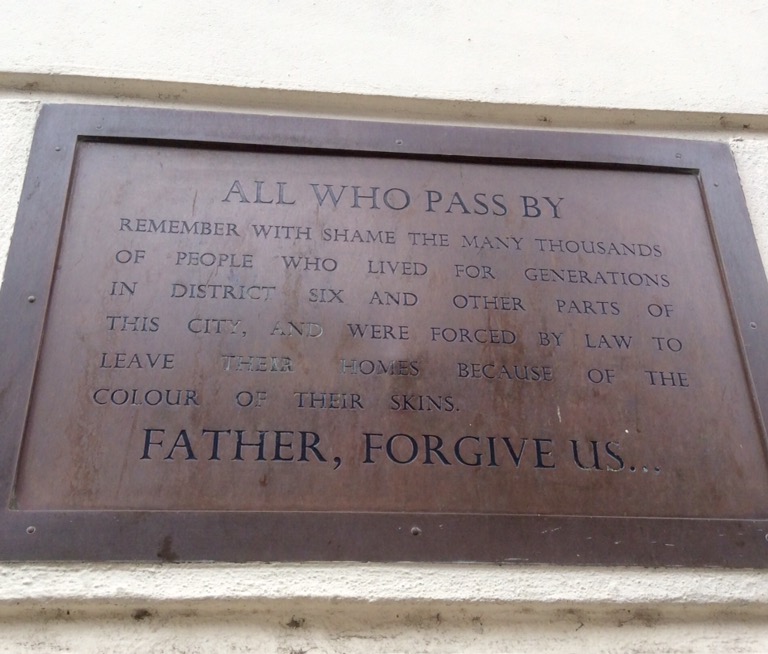 
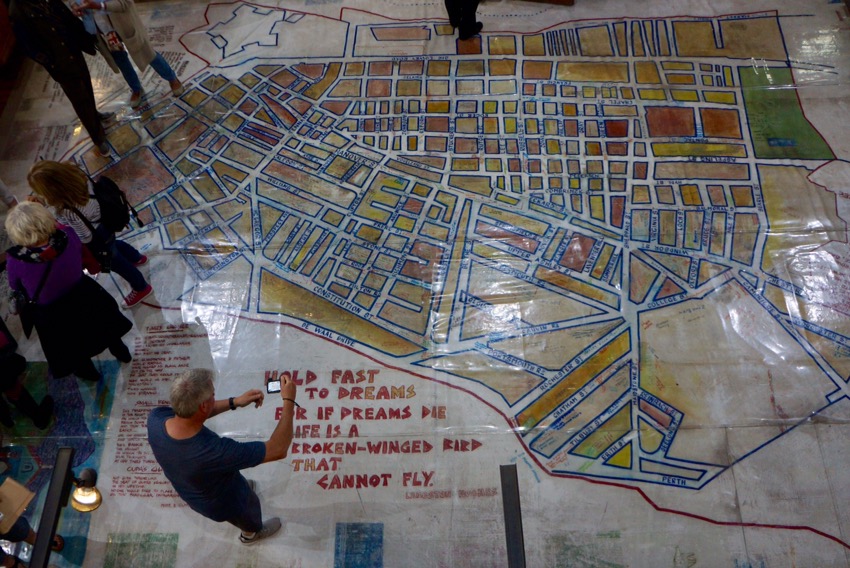
After the District Six museum, we drove to the modern Jewish museum, which recounts the history of Jews in South Africa and the important roles they have played in politics, civil rights, the arts, business, sports and other aspects of South African history. Nearby is a beautiful old orthodox synagogue that is still very much in operation with 800 members and daily services.
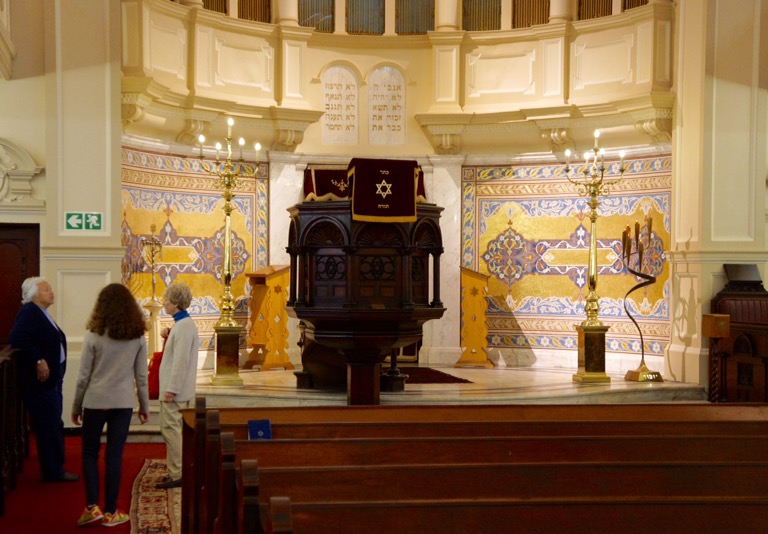 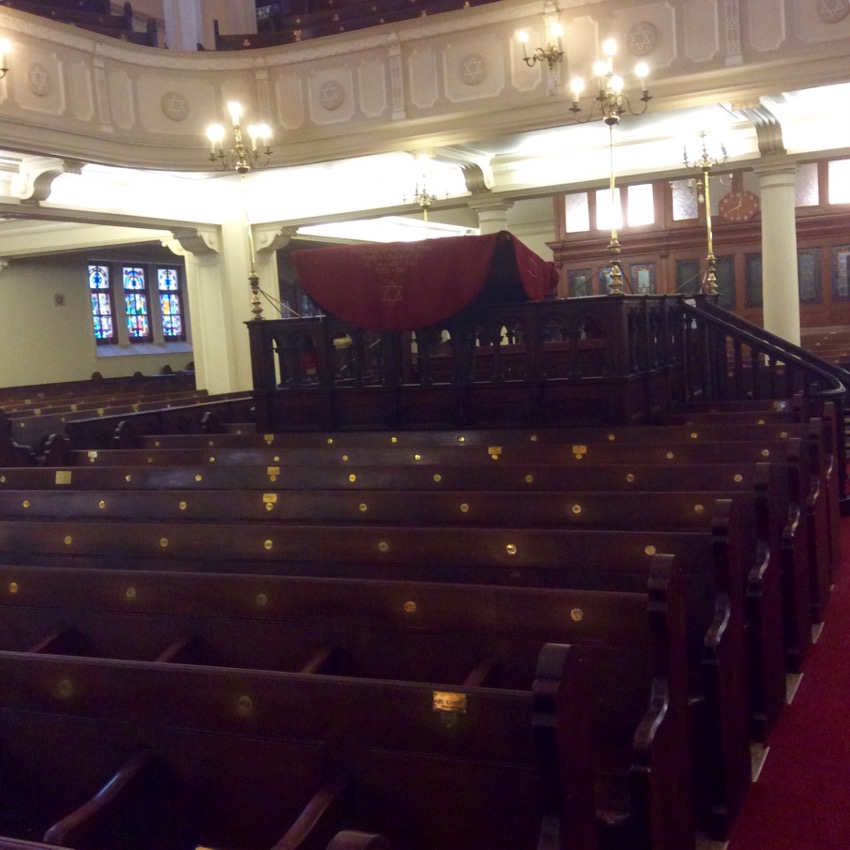
We drove down to the waterfront area, which is one of the chic areas of Cape Town, with fancy shops, restaurants and hotels. We walked through a humongous, expensive, vulgar mall of the kind that now grace cities all around the world. We stopped for a light sandwich lunch, then went on to a big outdoors-type shop that our travel agent had recommended to us. I was the only one who got anything, a shirt and some socks.
We made a dinner reservation for tomorrow at a restaurant in the wharf area called Harbour House, and stopped by the hotel our safari friends Jill and Bob had just checked into to tell them the plans.
On the way back to our hotel, we stopped at Signal Hill, which affords a great view of the city and of Table Mountain. We watched hang gliders take off from the mountain and tried to convince Zoe to give it a go. I don’t think she was comforted by my assurance that they wouldn’t charge us if the parachute did not open up.
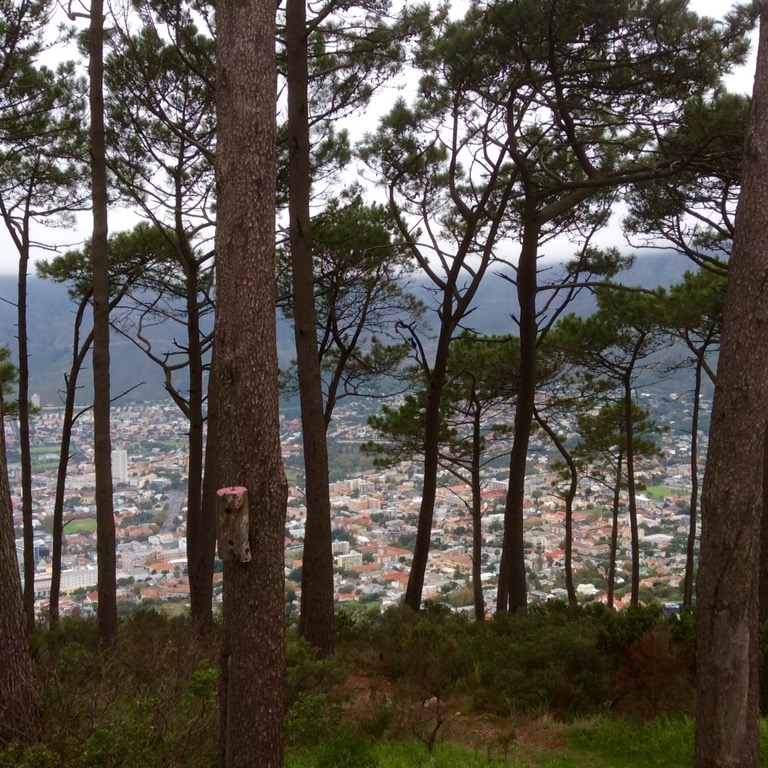
 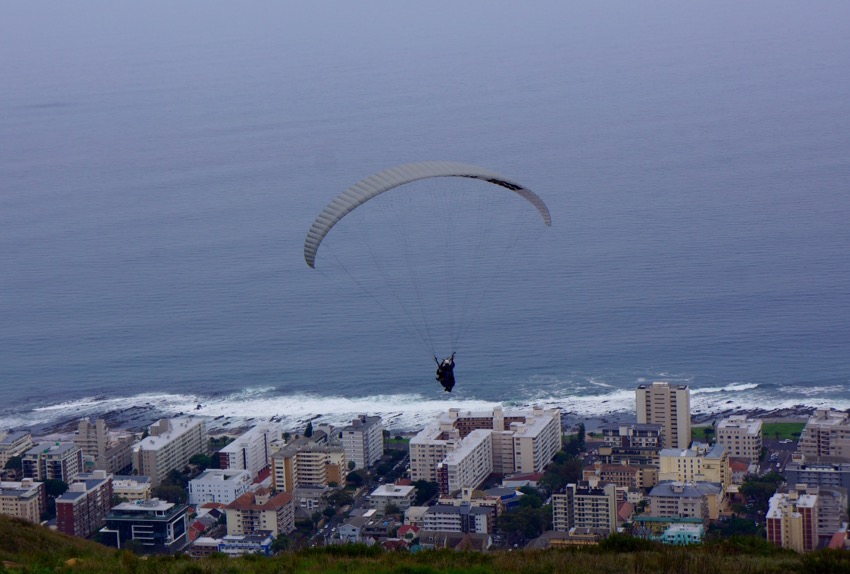
Back to the room to get ready for dinner, blog, rest, etc. a very good dinner at Societi Bistro, a couple blocks from our hotel.
May 9
Up for coffee and croissant/Danish, then out for morning ride, highlight of which were very cute, playful baby rhino, two leopards (one in a tree), and a hyena. Maybe if I ever get to connect my camera to the iPad, I’ll be able to actually show you photos that reflect what I’m writing about. Meanwhile, here are a few taken today with the iPad.
 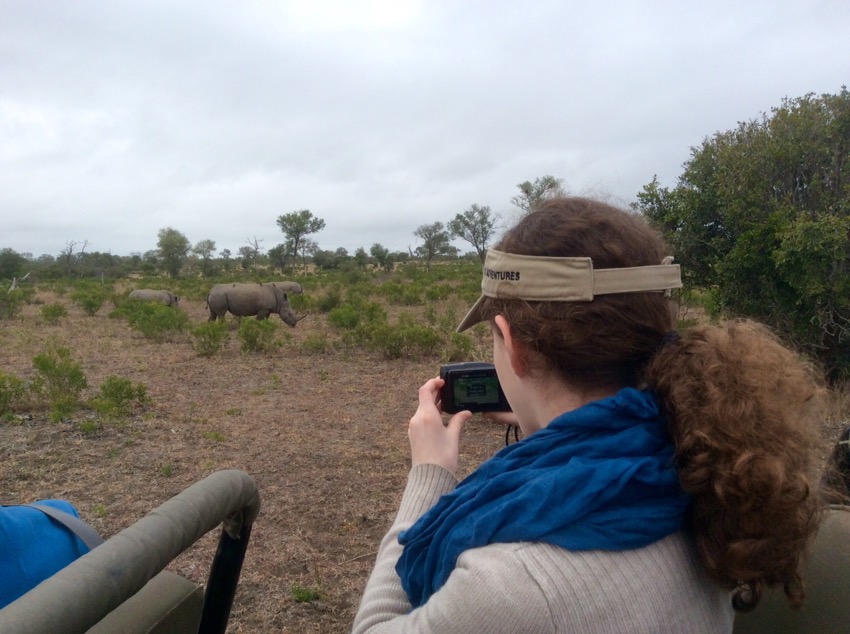  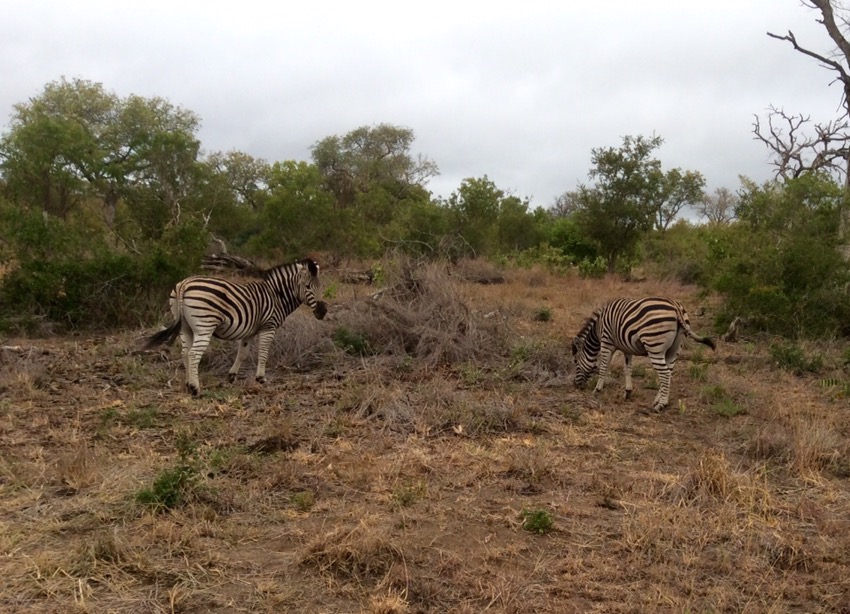  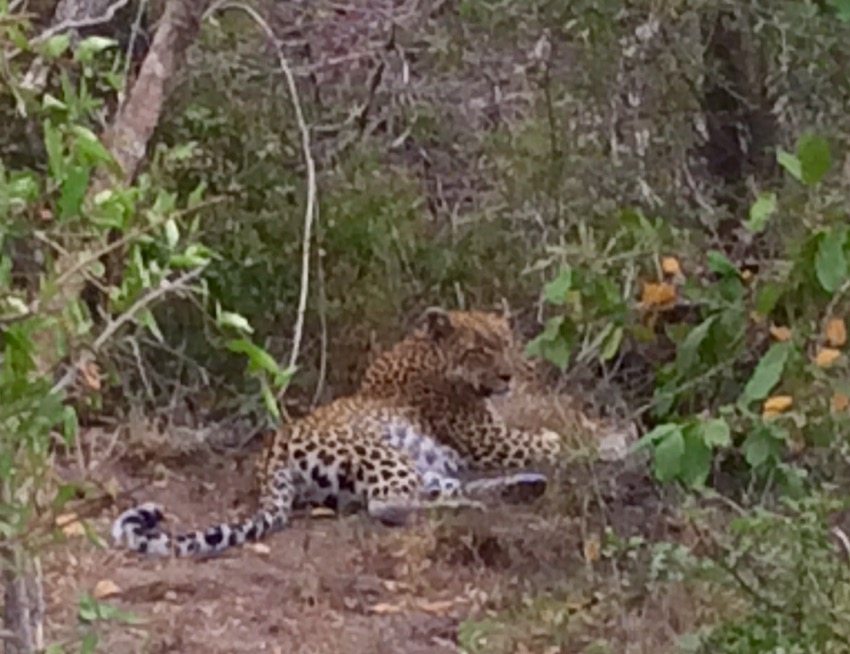
One of the best aspects of being on safari for me is that it provides an opportunity to be totally in the moment, not thinking or worrying about anything else. In general, I find it very difficult to achieve that state, so I cherish anything that facilitates it. Another time that I find it easy to be in the moment is when I scuba dive, which is one of the great attractions of that sport for me.
Towards the end of our morning safari ride, it begins to drizzle for the first time since we’ve hit Africa, then to pour on our uncovered jeep, adding a not unwelcome dash of adventure to our final game drive at Sabi Sabi Bush Lodge.
Breakfast at the lodge, finish packing and say goodbye to our fellow travelers, Sue and Heather from Australia, and Jill and Bob, who we’ve already arranged to meet for dinner in Cape Town on Wednesday evening. Though I’d been disappointed when I first saw that four others would be in our jeep, it worked out great. We’ve been invited sincerely to visit Australia and to stay with Sue and her husband.
Half hour drive to the landing strip for our short flight to an airport from which we’ll fly to Cape Town provides a nice contrast to similar rides to US airports. Roads are dirt and bumpy, not four lane, but instead of constant directional signs–14 miles to Kokomo, keep left for US 239 East, Road Construction next 79 miles, fines doubled for killing workers–and advertisements for everything under the sun–adult video stores, McDonalds, the Table Tennis Hall of Fame–we pass monkeys, water bucks, kudus, and water buffalo, as fish eagles soar overhead. I’ll opt for the African airport run any day.
Haven’t talked about our guide, Gus, and tracker, Jack, who have been with us on each drive and have done an excellent job. Professional, friendly and knowledgable. Our accommodations and services at Sabi Sabi have been terrific. Very comfortable and attractive suite, friendly staff and very good meals (better than our first dinner might have led me to expect). Our server at the table has been a lovely woman named Evidence. The traditional healer we met with in the village, it turns out, is a cousin of Evidence’s.
Zoe seems to be enjoying the safaris as well, though her frequent eye rolling has led me to conclude that she may not fully appreciate how hilarious her grandfather is. Yesterday, though, I did catch her trying to stifle a giggle when the guide pointed out the only meat-eating antelope and in reply to a question from a group member as to what kind of meat the antelope ate, I replied, “Cheeseburgers.” Probably she’s enjoyed many other comments that I’ve made on the trip, but has managed to conceal her appreciation of them. I’ll assume that that’s the case, and continue to share my observations with her freely.
Overall, the safari experience met, indeed probably exceeded, our very high expectations. So, I’d say the assessment to date is “safari, so goody.” We’re expecting different but equally interesting experiences in Cape Town.
On our arrival in Cape Town we are met by our guide/driver, Rudi, who has gone to the Apple Store to buy the plug I was missing to download photos. Except that when I try it back at the hotel, it’s the wrong plug. I’m sure it’s my fault. Maybe we’ll get it sorted out tomorrow. Or maybe not.
Anyway, Rudi drives us to our hotel, The Belmond Mount Nelson Hotel, which is located on the edge of downtown Cape Town and is a short stroll away from the vibrant areas of Kloof and Long Streets, known for their bustling markets and restaurants. The hotel is located in beautiful gardens with spectacular views of Table Mountain.
We had originally intended to stay at The Cape Grace, a beautiful hotel on the waterfront at which Carol and I had stayed thirteen years ago. But when our travel agent, Jean Zunkel, suggested that we switch to the Mount Nelson, we told her that we’d rely on her advice, since this was why she was paid the big bucks. We’ll be at the Nelson for five nights, which is really nice, because it gives us a chance to unpack and settle in. We’ve now checked in, and both the room and hotel are lovely. We have dinner reservations at an Italian restaurant near the hotel tonight, and plan to make it a rather early evening.
|
|





















